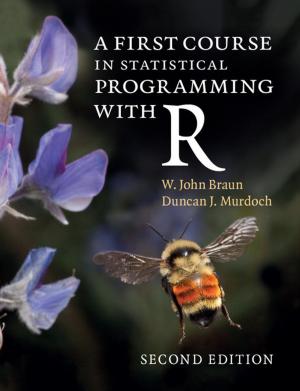Violence, Nonviolence, and the Palestinian National Movement
Nonfiction, Religion & Spirituality, Philosophy, Social & Cultural Studies, Political Science, History| Author: | Wendy Pearlman | ISBN: | 9781139124928 |
| Publisher: | Cambridge University Press | Publication: | October 24, 2011 |
| Imprint: | Cambridge University Press | Language: | English |
| Author: | Wendy Pearlman |
| ISBN: | 9781139124928 |
| Publisher: | Cambridge University Press |
| Publication: | October 24, 2011 |
| Imprint: | Cambridge University Press |
| Language: | English |
Why do some national movements use violent protest and others nonviolent protest? Wendy Pearlman shows that much of the answer lies inside movements themselves. Nonviolent protest requires coordination and restraint, which only a cohesive movement can provide. When, by contrast, a movement is fragmented, factional competition generates new incentives for violence and authority structures are too weak to constrain escalation. Pearlman reveals these patterns across one hundred years in the Palestinian national movement, with comparisons to South Africa and Northern Ireland. To those who ask why there is no Palestinian Gandhi, Pearlman demonstrates that nonviolence is not simply a matter of leadership. Nor is violence attributable only to religion, emotions or stark instrumentality. Instead, a movement's organizational structure mediates the strategies that it employs. By taking readers on a journey from civil disobedience to suicide bombings, this book offers fresh insight into the dynamics of conflict and mobilization.
Why do some national movements use violent protest and others nonviolent protest? Wendy Pearlman shows that much of the answer lies inside movements themselves. Nonviolent protest requires coordination and restraint, which only a cohesive movement can provide. When, by contrast, a movement is fragmented, factional competition generates new incentives for violence and authority structures are too weak to constrain escalation. Pearlman reveals these patterns across one hundred years in the Palestinian national movement, with comparisons to South Africa and Northern Ireland. To those who ask why there is no Palestinian Gandhi, Pearlman demonstrates that nonviolence is not simply a matter of leadership. Nor is violence attributable only to religion, emotions or stark instrumentality. Instead, a movement's organizational structure mediates the strategies that it employs. By taking readers on a journey from civil disobedience to suicide bombings, this book offers fresh insight into the dynamics of conflict and mobilization.















